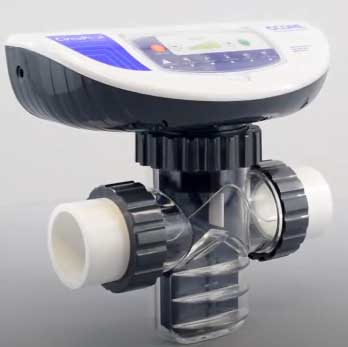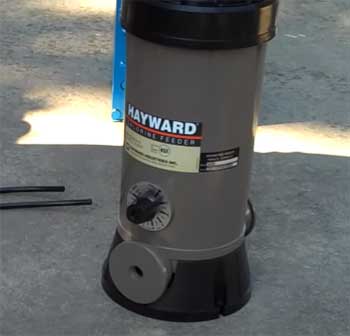Don’t want to deal with chlorine treatment every other day? Salt water chlorine generators (SWCG) are a good solution. CircuPool and Hayward are two top brands for SWGC.
CircuPool has greater capacity, works better in warmer places, and is pricier. Hayward has a smaller capacity, works better in colder places, and is more affordable.
CircuPool and Hayward- both are top SWGC manufacturers. They’re both amazing too, but which one should you pick if you can choose only one? Here’s a detailed comparison to help you out.
A Quick Summary of the Comparison
| Feature | CircuPool | Hayward |
| Capacity | Greater capacity | Smaller capacity |
| Performance and cleaning | Better for warmer places, easier to clean | Better for colder places, and harder to clean |
| Price | Pricey | Affordable |
And that’s the gist of the whole thing. Keep reading below for the detailed breakdown.
Key Differences Between CircuPool And Hayward
In terms of overall quality, CircuPool and Hayward both are really close. But there are some pretty big differences between their SWCGs.
Capacity, performance and cleaning, and price are the major differences between CircuPool and Hayward salt water cells.
Here’s how the differences work out for both brands.
- Capacity

CircuPool has a greater capacity between the brands.
Not just the volume capacity, CircuPool also generates more chlorine per day.
Hayward is pretty far behind in this department.
CircuPool chlorine generators are better for bigger pools.
They can work 15,000-60,000 gallons depending on the model. These filters also have more CL power.
They can go 0.8-3.10 lbs/day depending on the model.
When it comes to CL power, the higher the better. This should give you an idea of how strong CircuPool salt cells is.
Hayward is better for smaller pools and lower chlorine output cases. The salt cells can work 15,000-40,000 gallons depending on the model.
As for CL power, the number ranges from 0.6 to 1.40 lbs/day depending on the model.
- Performance and Cleaning
Salt cells usually don’t work in cold weather anyways, but even the general temperature limit on CircuPool and Hayward is different. CircuPool has a higher temperature limit compared to Hayward.
On the bright side, CircuPool is easier to clean than Hayward salt cells.
CircuPool salt cell performance starts dropping when the temperature is under 60°F on average. For the CORE series, the cells produce 50% output when the temperature drops below 64°F.
It becomes 25% when the temperature gets lower than 59°F. The RJ and SJ series cells don’t produce any chlorine below 65°F.
Hayward is much more tolerant. The chlorine production turns off when the temperature drops below 50°F regardless of the model. The limit difference isn’t very big but it is still a difference.
Another plus for CircuPool is their easy cleanup. Depending on the model, you can buy cleaning kits (sometimes they come with the main kit) or use a muriatic acid solution to clean the filters. They have slower buildups so you won’t have to clean them very frequently.
For Hayward, the cleaning part takes a little more work. You’ll have to use acidic solutions to clean the filter and they need frequent cleaning too. The buildup usually gets worse if you don’t clean the cells every 3 months.
- Price
This is the most visible difference between the two brands. CircuPool filters are on the higher side of the price tag. The replacement cells for their salt cells also cost more.
Hayward is a much more affordable brand. Depending on the model, you can get them somewhere between $499 and $1799.
The replacement cells for Hayward SWCGs are also lower than CircuPool.
Which Chlorine Generator Should You Go For?
This is the hard part. Both CircuPool and Hayward make some quality chlorine generators. They’re similar in performance and overall quality.

So comparing them is hard enough, choosing one is even harder.
Both brands bring their own benefits to the table. As you can guess, the answer to this won’t be a simple one.
The choice will ultimately boil down to your personal preferences. That’s the easy way to go.
But if you want a more objective approach, you’ll have to do some serious pros and cons calculations.
Go with the one that checks out the most boxes and you’ll be fine.
If you’re looking for something for a big pool and have an automation plan in the future, CircuPool SWGCs is the better choice. They can work a big pool, have a higher chlorine output rate, and are easily scalable to an automated system.
CircuPool filters are also easier to clean and the cell buildup is slower. You won’t have to clean them too often.
The problem is, CircuPool works better in higher temperatures. So if you’re more on the chill temperature side, this may not be the best option for you. They’re also pricier but the tag is worth it in the long run.
If you have a smaller pool or want something that works better in a lower temperature, Hayward is the better choice. They’re reliable and much more affordable.
You’ll have to clean them a bit more often but that’s not exactly a downside. Hayward also lasts pretty long so you won’t have to worry about not getting your money’s worth.
Overall, CircuPool is the better choice for this. but if you’re looking for more affordable options or want something for a more chilly place, Hayward is as good as it gets.
Frequently Asked Questions (FAQ)
Here are a bunch of questions people ask about CircuPool, Hayward, and SWCGs in general.
Salt cells are a mechanism to produce chlorine for the pool water.
The chlorinator adds a small amount of salt to the water. Then it converts the chloride in the salt to chlorine and sanitizes the water. The whole process works with an electrolytic cell.
CircuPool is made in the USA.
If the cell is SJ series, you can use the cleaning tool that comes with the cell. You can find the replacement part on their website for it. If the salt cell is RJ series, you’ll have to use a muriatic acid solution to clean the buildup.
Final Verdict
Salt cells are convenient, but only if you pick the right one. CircuPool and Hayward both make quality SWCGs. As for the CircuPool and Hayward debate, the winner depends on personal preference.
Objectively, CircuPool is the better choice in this case. And if you want something more affordable, Hayward is a good choice.
